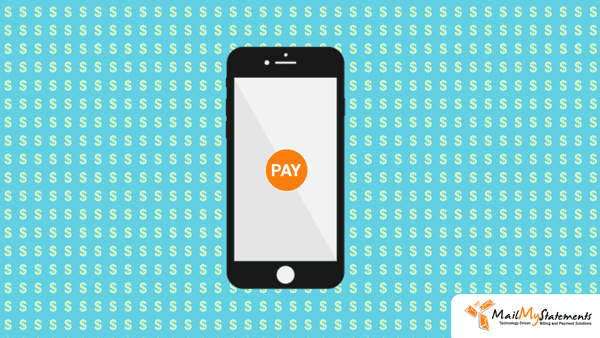What is Omnichannel Patient Billing?

Are you part of the nearly 100% of healthcare providers that still use only paper to communicate with patients? If yes, you may also fit in with the majority who cites patient payment collections as one of their top revenue cycle management concerns.
While the use of paper is generally becoming outdated, it still holds an important place in the healthcare industry and will likely remain the main form of patient-practice communication for many more years. In contrast, although technology-driven communication and payment methods are gaining popularity throughout the healthcare industry, adoption is still surprisingly low. Using a combination of both channels (paper and digital) may be the most successful way to effectively communicate with patients and encourage payments.
What Does Omnichannel Mean?
If you’re unfamiliar with the latest healthcare buzzword, omnichannel billing encompasses the idea of using varied channels to effectively reach an audience. Like many other trends that eventually make their way to the healthcare industry, the omnichannel approach originally gained popularity in retail.

Retailers have recently prioritized using online communications and text messaging to complement in-store interactions to improve the customer service experience and increase sales.
For example, a consumer shopping for running shoes in-store might make a purchase and provide their email to receive sales notifications and updates. Nine months later, the customer receives an email notifying them that it’s time to start looking for a new pair of shoes, as the previously purchased pair is likely beginning to wear out. This email provides the customer the option to order the exact same pair for home or in-store delivery and offers other similar shoe options for the customer to consider.
This retailer is using an omnichannel approach to increase the lifetime value of the customer by encouraging repeat sales and simplifying the shopping process by seamlessly combining in-store and online interactions.
Now, how does this approach fit into healthcare?
Omnichannel Patient Billing and Collections in Healthcare
The Disconnect
As healthcare technology continues to improve, patients expect digital communication and payment features to help streamline the patient billing process. For example: According to Health Leaders:
- 80% of patients are likely to enroll or are already enrolled in eStatements from providers, yet 11% of providers do not offer this option.
- 91% of providers still receive paper checks, yet 82% of providers prefer electronic funds transfer from the payer.
- 78% of providers leverage paper and manual processes for collections while 68% of consumers prefer electronic methods.
When practices fail to provide patients with their preferred communication and payment methods, they increase the amount of time it takes for patients to make a payment, while simultaneously decreasing practice revenues.

Meeting in the Middle
Much like each patient requires individualized care, they also have unique communication and payment preferences based on their specific situation.
A 55-year-old patient may prefer to receive a paper statement then pay by mailed check, while a 20-year-old patient expects to view their statement online and submit payment through a secure portal.
A patient currently dealing with many different stresses may need two text reminders to submit payment.
Some patients may prefer to receive a paper statement rather than access an online portal to submit payment.
Although the general trend is moving towards entirely electronic communications, many patients still prefer to receive a paper statement. It’s important to offer both paper and digital options so that every patient has an alternative that best suits their needs.
A practice that offers omnichannel patient billing options gives patients the ability to personalize their communication and payment methods, helping to reduce the stress brought by hefty healthcare costs. A patient is significantly more likely to make a timely and complete payment if they can choose a payment method they deem simple and hassle-free.
How to Become an Omnichannel Patient Billing Provider
So, how can a practice shift from paper-only to an omnichannel patient billing approach? It’s simpler than you think. Working with a third-party statement and payment vendor makes the transition easy because they already use an omnichannel system.
For example, the provider can choose to send out paper statements with a note encouraging patients to opt-in to eStatements online. From the online eStatement, the patient can then easily click into a secure payment portal from either mobile or desktop to make a payment or elect for a payment plan.
If the patient does not open the eStatement after a certain period, another can be sent out. If the second attempt is also ignored, a paper statement will automatically send. The practice will only be charged for the paper statement in this case.
Even the patients who do not opt to receive eStatements still have access to an online portal through written directions or a QR code scan.
Final Thoughts
Unfortunately, the disconnect between provider communication channels and patient desires is still large. This results in confused and stressed patients, who then take longer periods of time to make a payment — if at all.
Providing an omnichannel billing experience allows the patient to customize their healthcare experience, resulting in a better patient-practice relationship and higher revenues.
Get in touch with MailMyStatements today to learn about how our integrated patient statement and payment system can help bring an omnichannel approach to your practice.
Comments
Post a Comment